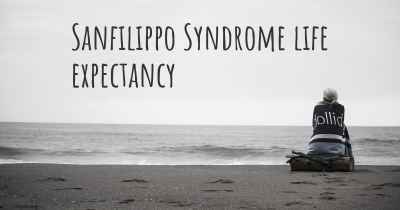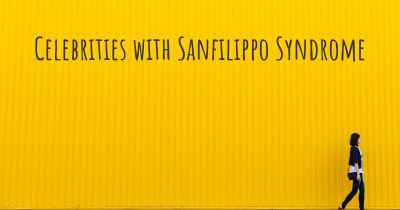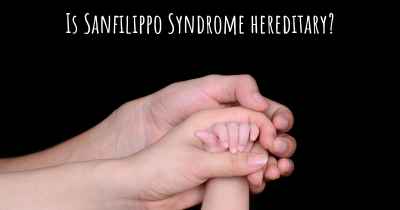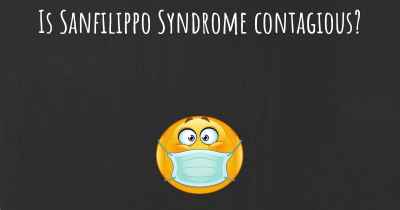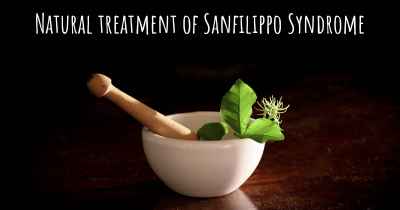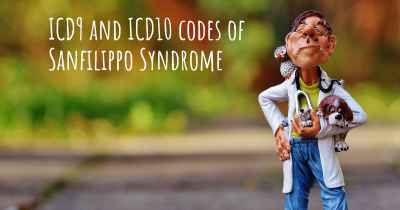What are the best treatments for Sanfilippo Syndrome?
See the best treatments for Sanfilippo Syndrome here

Sanfilippo Syndrome is a rare genetic disorder that belongs to a group of diseases called mucopolysaccharidoses (MPS). It is characterized by the body's inability to break down certain sugars, leading to the accumulation of harmful substances in the cells. This progressive condition primarily affects the brain and nervous system, resulting in severe developmental and neurological problems. Unfortunately, there is currently no cure for Sanfilippo Syndrome. However, several treatments aim to manage the symptoms and improve the quality of life for affected individuals.
1. Supportive Care: The cornerstone of Sanfilippo Syndrome treatment is providing comprehensive supportive care. This involves a multidisciplinary approach, including a team of specialists such as pediatricians, neurologists, geneticists, and physical and occupational therapists. The goal is to address the various symptoms and complications associated with the disease.
2. Symptomatic Treatment: Symptomatic treatment focuses on managing specific symptoms experienced by individuals with Sanfilippo Syndrome. This may include medications to control seizures, sleep disturbances, hyperactivity, and behavioral problems. Physical and occupational therapy can help improve mobility, muscle strength, and coordination. Speech therapy may be beneficial for individuals experiencing speech and communication difficulties.
3. Enzyme Replacement Therapy (ERT): Enzyme replacement therapy is a treatment approach used for some types of mucopolysaccharidoses, but unfortunately, it is not effective for Sanfilippo Syndrome. The enzyme required to break down the accumulated substances in Sanfilippo Syndrome cannot effectively cross the blood-brain barrier, limiting the effectiveness of ERT in treating the neurological symptoms.
4. Gene Therapy: Gene therapy is an emerging treatment strategy that holds promise for the future of Sanfilippo Syndrome. It involves introducing a functional copy of the faulty gene responsible for the disease into the patient's cells. This approach aims to restore the production of the missing enzyme and prevent the accumulation of harmful substances. Although gene therapy is still in the experimental stage, early studies have shown promising results in animal models and some human trials.
5. Clinical Trials: Participating in clinical trials can provide access to experimental treatments and therapies that are not yet widely available. These trials aim to evaluate the safety and efficacy of potential treatments for Sanfilippo Syndrome. It is important to consult with healthcare professionals and genetic counselors to explore available clinical trial options and determine eligibility.
6. Palliative Care: As Sanfilippo Syndrome is a progressive and life-limiting condition, palliative care plays a crucial role in managing symptoms and improving the quality of life for affected individuals. Palliative care focuses on providing comfort, pain management, and emotional support for both the patient and their family. It aims to enhance the overall well-being and ensure the best possible quality of life.
7. Support Groups and Counseling: Connecting with support groups and counseling services can be invaluable for individuals and families affected by Sanfilippo Syndrome. These resources provide a platform for sharing experiences, obtaining emotional support, and accessing information about available resources and therapies. Support groups can also help in navigating the challenges associated with the disease and provide a sense of community.
In conclusion, while there is currently no cure for Sanfilippo Syndrome, various treatments and supportive measures can help manage symptoms and improve the quality of life for affected individuals. Supportive care, symptomatic treatment, gene therapy, clinical trials, palliative care, and support groups all play important roles in addressing the complex needs of individuals with Sanfilippo Syndrome. Ongoing research and advancements in medical science offer hope for future breakthroughs in the treatment of this devastating condition.
Posted Nov 6, 2019 by TSF Inc Team Sanfilippo Foundation
Posted Jan 1, 2018 by Danielle 3160
Posted Feb 25, 2019 by Patty Jesse 3000
Posted Nov 3, 2019 by Anne-marie 2500
Posted Dec 27, 2019 by babbey 300
